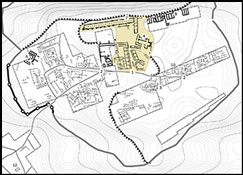Article contents
Reccopolis revealed: the first geomagnetic mapping of the early medieval Visigothic royal town
Published online by Cambridge University Press: 12 June 2019
Abstract

Reccopolis, in central Iberia, is the only archaeologically identified town founded by Germanic newcomers on Roman soil during the challenging socio-political and environmental circumstances of the mid to late sixth century AD. Despite archaeological investigations, doubts have persisted concerning the nature and size of Reccopolis. Recent geomagnetic survey, however, has revealed a dense urban fabric, unexpected new royal palace buildings, an extramural suburb and one of the potentially earliest Islamic mosques in Iberia. Reccopolis now stands as an exceptional example of early medieval urbanism that challenges our perceptions of urban development in sixth-century Europe.
Information
- Type
- Research
- Information
- Copyright
- Copyright © Antiquity Publications Ltd, 2019
References
- 8
- Cited by

